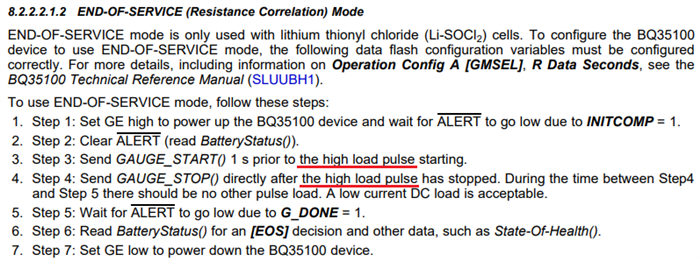Hi Team,
My customer considers EOS Mode with Li-SOCl2 battery.
Regarding page 19 8.2.2.2.1.2, what does "the high load pulse" indicate?
Does it mean we have to pull the high load pulse by intention?
Best Regards,
Yaita
-
Ask a related question
What is a related question?A related question is a question created from another question. When the related question is created, it will be automatically linked to the original question.

